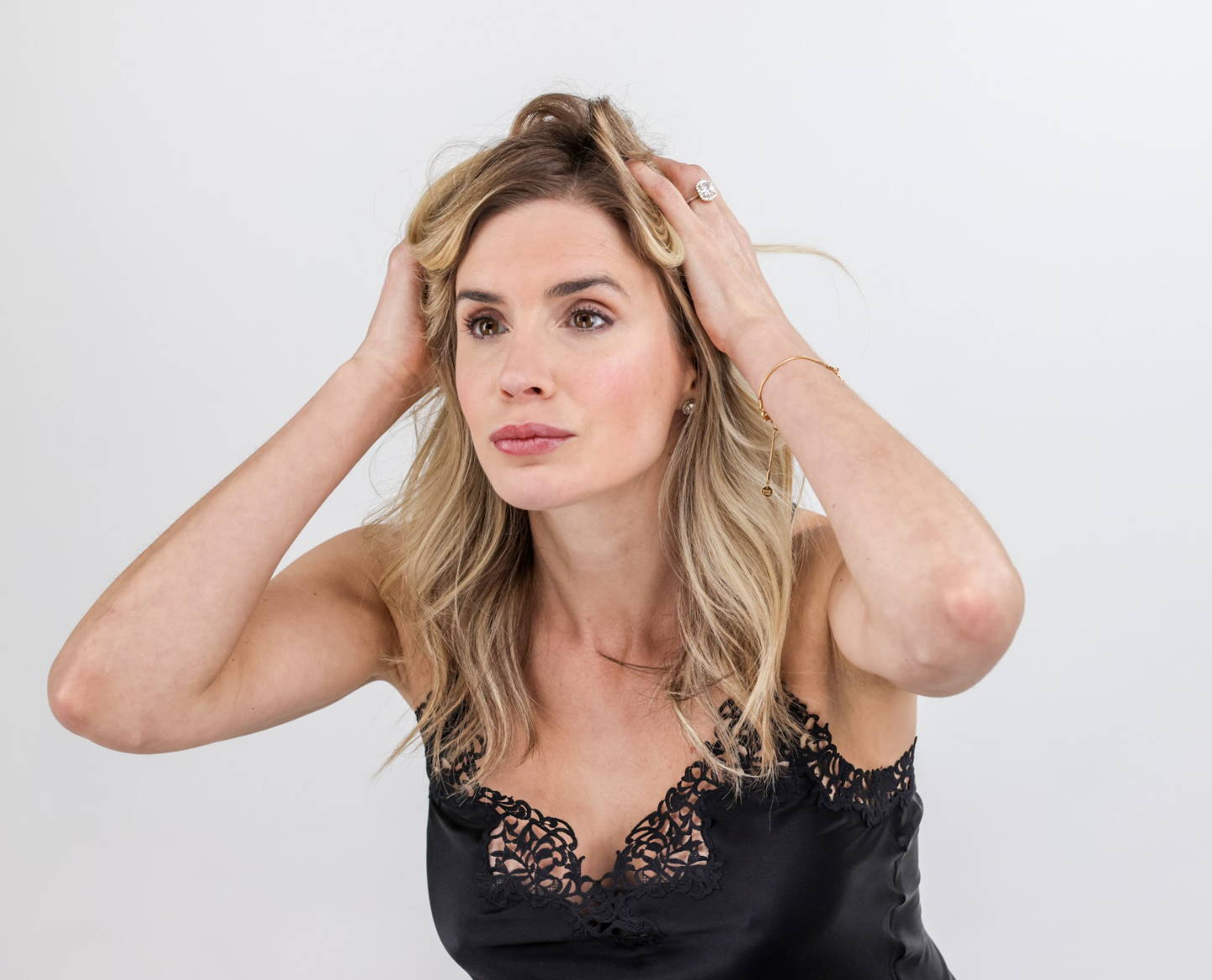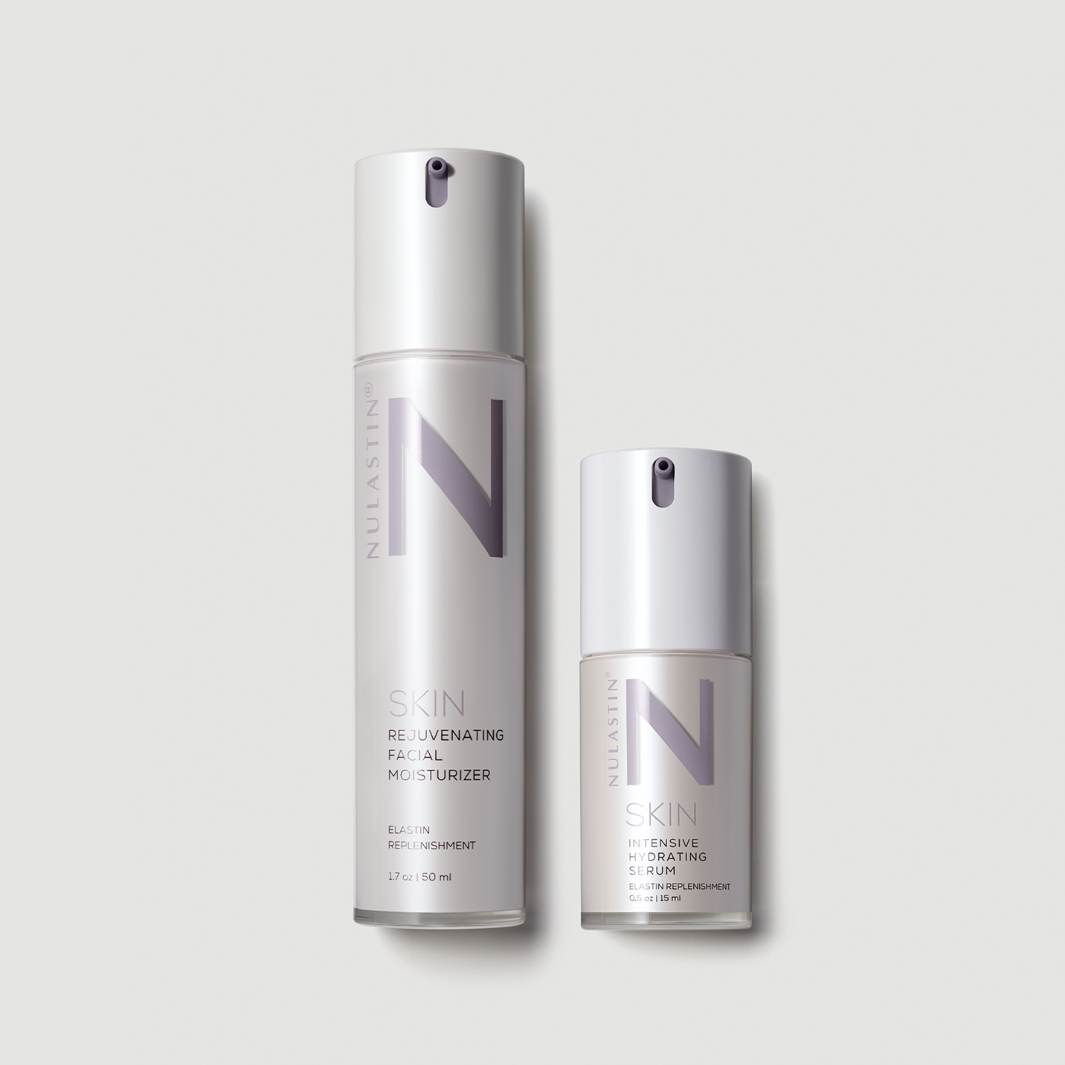Did you know most people lose between 50 and 100 hairs on a typical day? We usually don’t notice because as we naturally shed, new growth replaces what we lose. But when your brushes and pillows look a little fuzzier than normal – or the dreaded shower monster shows up in your drain – it’s normal to be taken aback.
Hair loss is more common than you think. In fact, more than 80% of men and nearly 50% of women experience significant hair loss during their lifetime. This thinning can begin well before middle age and we usually first notice it when new growth either slows down or stops replacing what we lose naturally.
Let’s get real about some of the most common causes of hair loss, how to avoid it and what you can do to fight back.

1. Avoid harsh hairstyles
Ultra-tight ponytails, top knots and braids can impact your hair growth for the worse, especially around the edges of your face and the nape of your neck. The same is true for constant hat wear. These styles create a constant pull and lead to hair loss over time. This is what’s called “traction alopecia” and the best way to avoid it is to be gentle with your hair by minimizing tugging, taking a break from hats, wearing more relaxed styles and not sleeping with your hair tightly pulled back. Silk bonnets, scrunchies and pillowcases help, too. Traction alopecia isn’t always reversible, but can be avoided by limiting styles that pull on the scalp.
2. Stop potent processes
It’s true that most things are okay in moderation and hair care is no different. With continued use, the heat and chemicals used to lighten, perm or relax curls can lead to damage resulting in hair loss. Drop the frequency of these treatments if you can’t leave them behind altogether and use nourishing products whenever possible. Consider natural or gentle alternatives. For example, heatless curlers at bedtime are much safer than perms or constantly using a curling iron. And occasional heat styling is better than chemical relaxers. Small changes in your routine can prevent further hair loss, but you want to avoid damaging the hair follicles, which can make regrowth challenging or even impossible.
3. Roll with life events
We’ve heard from lots of customers who started experiencing hair thinning after giving birth, but other stressful events can trigger hair loss, too. Constant work or financial stress, death of a loved one, divorce, or any major life change whether positive or negative can be trying – and these strong emotions can manifest physically as hair loss.
Fortunately, this type of hair loss isn’t usually permanent and your body will readjust once the stress subsides. If you start noticing more hair in your brush or on your pillow during a particularly challenging season of life, don’t worry. Try taking some time for yourself through meditation and breathwork, different types of rest and setting boundaries that will help protect your free time and leave room for healing, whatever that may look like.
4. Embrace natural aging
Many people start noticing gradual hair loss with age because the growth rate slows as we age. And when hair follicles stop producing hair, thinning and patchiness can set in near the hairline, part or crown. Over time, hair color gets less vivid, too. With early action though, you can jumpstart those dormant hair follicles again for thicker, fuller-looking hair that makes you feel like yourself again.
5. Consider family history
Heredity is actually the most common cause of hair loss for men and women. You’ve probably heard it called “male” or “female pattern hair loss”. This means you’ve inherited genes that cause your hair follicles to shrink over time and stop producing hair. It usually starts later in life, but can happen anytime. Women may notice their part getting wider while men may notice a receding hairline or baldness at the crown. Fortunately, this type of hair loss is usually reversible – especially if treatment is started soon after thinning begins.

Besides choosing more relaxed hairstyles, taking a break from harsh processes and managing stress, there are a few other ways to keep your hair happy. Being gentle while brushing, combing or detangling damp hair can help. If you’re dealing with a medical condition or hormonal changes, talk openly with your doctor about what’s going on.
Keep an eye out for thinning on top of your head, widening of your part, receding of your hairline, patchy bald spots or a sudden weakening or “loosening” of your strands. Staying in-tune with your body and being mindful of changes as they happen will empower you to take early action against hair loss.
What to Do When You Notice Thinning
Rethink your hair care routine. Your secret weapon against hair loss is elastin replenishment. As we age, our bodies stop producing elastin and slow the production of supporting extracellular matrix proteins like collagen, laminin and keratin. This leaves us with common age-related concerns like thinning hair and baldness.
In a 16-week clinical evaluation, this gentle serum reduced the appearance of thinning and bald spots for 80% of participants.
Hold onto your hair and your confidence with the ultimate secret weapon against hair loss. Replenish lost elastin and reclaim your signature look by starting your NULASTIN journey today.
Our entire collection supports the body’s natural ability to stimulate the replenishment of elastin while defending against matrix protein damage caused by aging, stress, sun exposure, weight changes and other factors. You can try NULASTIN risk-free because every one of our products is backed by a 100% Performance Guarantee. If our product(s) do not perform to your expectations, you can exchange or return them at any time [Terms and Conditions Apply].




